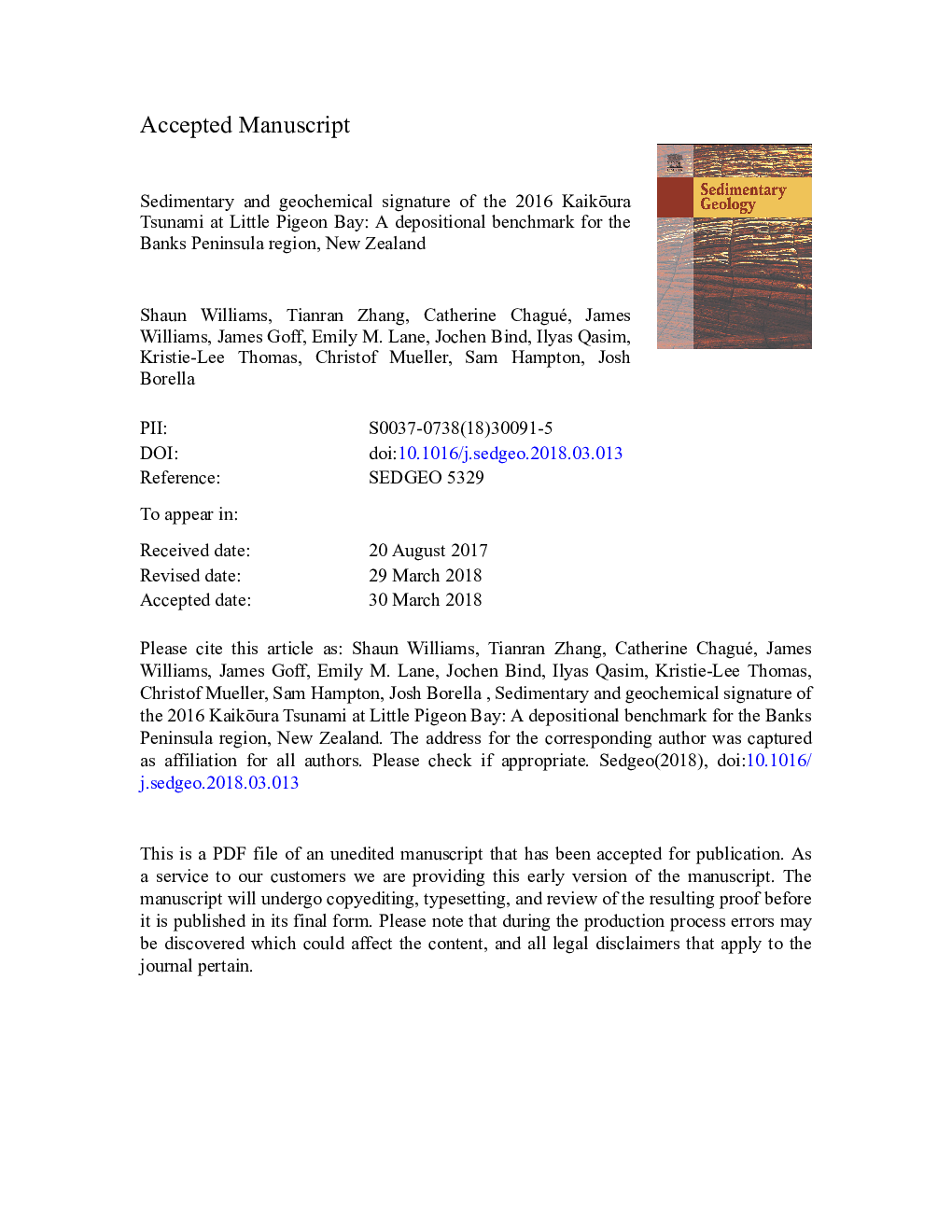| Article ID | Journal | Published Year | Pages | File Type |
|---|---|---|---|---|
| 8908508 | Sedimentary Geology | 2018 | 33 Pages |
Abstract
The 14 November 2016 KaikÅura Tsunami inundated Little Pigeon Bay in Banks Peninsula, New Zealand, and left a distinct sedimentary deposit, on the ground and within the cottage near the shore. Sedimentary (grain size) and geochemical (electrical conductivity and X-Ray Fluorescence) analyses on samples collected over successive field campaigns are used to characterize the deposits. Sediment distribution observed in the cottage in combination with flow direction indicators suggests that sediment and debris laid down within the building were predominantly the result of a single wave that had been channeled up the stream bed rather than from offshore. Salinity data indicated that the maximum tsunami-wetted and/or seawater-sprayed area extended 12.5â¯m farther inland than the maximum inundation distance inferred from the debris line observed a few days after the event. In addition, the salinity signature was short-lived. An overall inland waning of tsunami energy was indicated by the mean grain size and portable X-Ray Fluorescence elemental results. ITRAX data collected from three cores along an inland transect indicated a distinct elevated elemental signature at the surfaces of the cores, with an associated increase in magnetic susceptibility. Comparable signatures were also identified within subsurface stratigraphic sequences, and likely represent older tsunamis known to have inundated this bay as well as adjacent bays in Banks Peninsula. The sedimentary and geochemical signatures of the 2016 KaikÅura Tsunami at Little Pigeon Bay provide a modern benchmark that can be used to identify older tsunami deposits in the Banks Peninsula region.
Related Topics
Physical Sciences and Engineering
Earth and Planetary Sciences
Earth-Surface Processes
Authors
Shaun Williams, Tianran Zhang, Catherine Chagué, James Williams, James Goff, Emily M. Lane, Jochen Bind, Ilyas Qasim, Kristie-Lee Thomas, Christof Mueller, Sam Hampton, Josh Borella,
